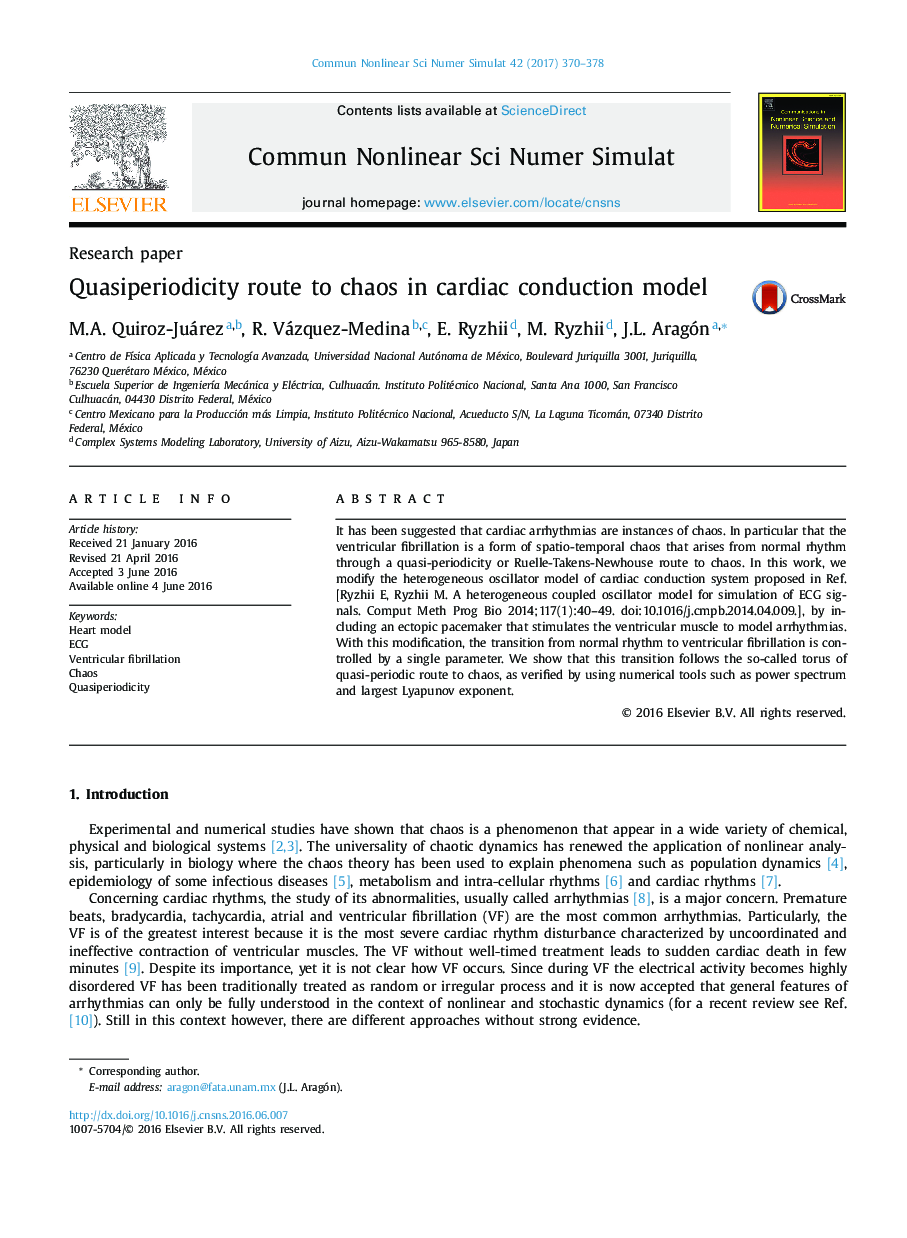| Article ID | Journal | Published Year | Pages | File Type |
|---|---|---|---|---|
| 757835 | Communications in Nonlinear Science and Numerical Simulation | 2017 | 9 Pages |
•An ectopic pacemaker is included in a heterogeneous oscillator model of cardiac conduction system.•It produces a model capable to generate electrocardiogram signals corresponding to healthy hearths as well as with arrhythmias.•The transition from normal to ventricular fibrillation is controlled by a single parameter of the model.•It is numerically shown that the transition from normal to ventricular fibrillation follows the torus or quasi-periodic route to chaos, as it has been suggested to occur in some experimental results.
It has been suggested that cardiac arrhythmias are instances of chaos. In particular that the ventricular fibrillation is a form of spatio-temporal chaos that arises from normal rhythm through a quasi-periodicity or Ruelle-Takens-Newhouse route to chaos. In this work, we modify the heterogeneous oscillator model of cardiac conduction system proposed in Ref. [Ryzhii E, Ryzhii M. A heterogeneous coupled oscillator model for simulation of ECG signals. Comput Meth Prog Bio 2014;117(1):40–49. doi:10.1016/j.cmpb.2014.04.009.], by including an ectopic pacemaker that stimulates the ventricular muscle to model arrhythmias. With this modification, the transition from normal rhythm to ventricular fibrillation is controlled by a single parameter. We show that this transition follows the so-called torus of quasi-periodic route to chaos, as verified by using numerical tools such as power spectrum and largest Lyapunov exponent.
